2006 Key Accomplishments
Research is at the center of all National Oceanic and Atmospheric Administration services. NOAA’s Office of Oceanic & Atmospheric Research (OAR) conducts research, develops products, and provides scientific understanding and leadership to support NOAA's mission to meet our nation’s economic, social and environmental needs.
New Global Model Shows Outstanding Ability
The new CM2.1 Global coupled climate model for climate research and prediction, developed by the Geophysical Fluid Dynamics Laboratory (GFDL), was used for the current International Panel on Climate Change assessment of anthropogenic climate change, and was independently judged one of the best models in the world. CM2.1 provides greater credibility for projections of future climate change. Work is now underway to build a new model (CM3). Moving to CM3, with improved physics and resolution, will enhance NOAA’s ability to simulate regional climate change, as well as changes in climate extremes.
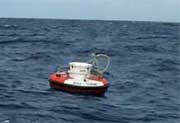
DART-II Buoy
Tsunami Warning System Improved
The Pacific Marine Environmental Laboratory (PMEL) designed Deep-ocean Assessment and Reporting of Tsunamis (DART)-II technology, which provides twoway communication capabilities, allowing engineers the ability to troubleshoot these systems from the lab and repair the systems remotely. The new capability minimizes system downtime; and moreover, saves money by eliminating the need to deploy a ship to make repairs. The DART program also created tsunami impact forecast models for nine major coastal communities, providing much-needed information for inundation maps.
New Test for Red Tide and Fecal-Indicating Bacteria Could Assist Resource Managers
The Atlantic Oceanographic and Meteorological Laboratory developed techniques for red-tide and fecalindicating bacteria markers indicative of human sources of fecal pollution, and a viral pathogen. The methods can be used to rapidly screen water samples for the presence of microbial contaminants and work is underway to integrate them into semi-automated detection platforms. This tool could assist resource managers in making improved, timely decisions regarding human health and safety.
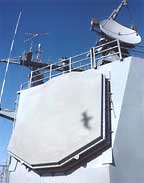
Phased Array Radar
Phased Array Radar Demonstrates Improved Scanning Speeds
The National Severe Storm Laboratory, working with private sector partners including Lockheed Martin, demonstrated a complete volume scan around the Multi-functional Phased-Array Radar can be obtained in less than one minute, while the current NEXRAD radar takes five to six minutes for such a scan. This could increase lead times for severe weather warnings such as tornadoes.
Great Lakes Operational Forecast System Successfully Transferred to National Ocean Service
The Great Lakes Operational Forecast System (GLOFS), developed by the Great Lakes Environmental Research Laboratory and Ohio State University, uses information generated by a three-dimensional hydrodynamic model that includes real-time data and forecast guidance for winds, water levels and other meteorological parameters to predict water levels, currents and temperatures at thousands of locations throughout the five lakes. Key products, including data plots and animated map plots of water levels, water currents and water temperatures, will be provided to lake carriers, mariners, port managers, emergency response teams and recreational boaters.
NOAA Research Partnerships Enhance Global Climate Observation System
The Earth System Research Laboratory (ESRL), in conjunction with the Canadian Network for Detection of Arctic Change program, and the Meteorological Service of Canada, established a research site located in Eureka, Nunavut to make long-term climate measurements of Arctic clouds and aerosols.
NOAA Research Led the 2006 International Ozone Assessment
The 2006 International Ozone Assessment, led by ESRL tracked the outcomes of the Montreal Protocol and indicated the protocol is working. For the first time, the assessment shows ozone depleting substances in the atmosphere have decreased. This document represents major contribution to NOAA’s portfolio of climate science products.
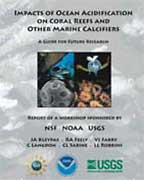
Carbon Dioxide Threats to Marine Life
A report co-authored by PMEL scientists documents how carbon dioxide is dramatically altering ocean chemistry and threatening the health of marine organisms, including corals. They uncovered new evidence of ocean acidification in the North Pacific. The increased acidity lowers the concentration of a building block of calcium carbonate, used many marine organisms use to grow their skeletons and create coral reef structures. These NOAA researchers were awarded the Commerce Department’s gold medal for pioneering research leading to the discovery of increased acidification in the world's oceans.
New Mercury Analysis Test Reduces Time & Costs
Illinois-Indiana Sea Grant researchers have applied for a process patent on a mercury analysis technique that will make testing for methyl mercury, a highly toxic environmental contaminant, faster and cheaper. The main risk to people and wildlife comes via consuming methyl mercury that has accumulated in fish. To date, the number and scope of environmental studies of mercury have been limited due to the high cost of testing. The new test promises to drastically reduce costs so scientists can increase monitoring and design better remediation strategies for contaminated sites.
NOAA Research Developed Climate Test Bed
NOAA formed the Climate Test Bed at the National Centers for Environmental Prediction to accelerate the transfer of research and development into improved NOAA operational climate forecasts, products, and applications. Early benefits from Climate Test Bed prototyping are reflected in recent improvements of U.S. seasonal forecasts. NOAA Research partners in the Test Bed include GFDL and the Climate Program Office.
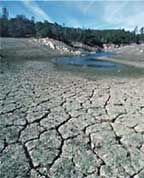
National Integrated Drought Information System (NIDIS) Office Established
NOAA established the NIDIS Office at ESRL in response to requests from western state governors. NIDIS aims to provide a real-time status report on the current levels and future risks of drought in any given location and establish coordinated planning and preparedness measures for the Nation. Efforts include integrating existing independent monitoring, identifying monitoring gaps and developing plans to close those gaps. The NIDIS office is the first step in the implementation of the system and will coordinate activities within NOAA, across Federal agencies, and with stakeholders.
PREEMINENT RESEARCH
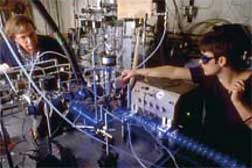
NOAA Research studies the Earth system from the depths of the oceans to the upper reaches of the atmosphere. Our world-class scientists conduct preeminent research that contributes to public health and safety, healthy ecosystems, and a robust economy. This requires transfer of research to operations, as well as continued exploration and discovery in new areas that will expand the boundaries of our understanding of the Earth system and lay the foundation for the NOAA services of the future.
NOAA Research is integrated across three central research themes: ocean, coastal, and Great Lakes resources; climate; and weather and air quality. The NOAA Research network consists of seven internal research laboratories; an Office of Ocean Exploration that conducts both internal and extramural research; 30 National Sea Grant university programs, six undersea research centers, a research grants program through the Climate Program Office, and 13 cooperative institutes with academia.
VALUE TO SOCIETY
NOAA research provides value to society through improved weather forecasts, and enhanced navigation and aviation safety, as well as improved ocean and coastal services. Ultimately, the information NOAA Research provides is used by decision makers to prevent the loss of human life and manage natural resources, while maintaining a strong economy. NOAA Research:
- Provides comprehensive knowledge to guide national environmental policy decisions;
- Improves environmental services to the Nation, including reliable predictions and assessments; and
- Promotes economic growth through science for decision-making, new technology, and partnerships.
To Learn More, Visit: http://www.research.noaa.gov/
NOAA collaborates with several groups on Arctic research, both domestically
and internationally, including:
The Arctic Monitoring and Assessment Programme
(AMAP) http://www.amap.no/
The Arctic Council http://www.arctic-council.org/
The Cooperative Institute
for Arctic Research http://www.cifar.uaf.edu/
The International Arctic Research
Center http://www.iarc.uaf.edu/
To Work or Study at OAR, Visit These Sites:
NOAA Careers: http://www.careers.noaa.gov
Hollings Scholarships:
http://www.orau.gov/noaa/HollingsScholarship/
Knauss Fellowships: http://www.seagrant.noaa.gov/knauss/
February 2007

